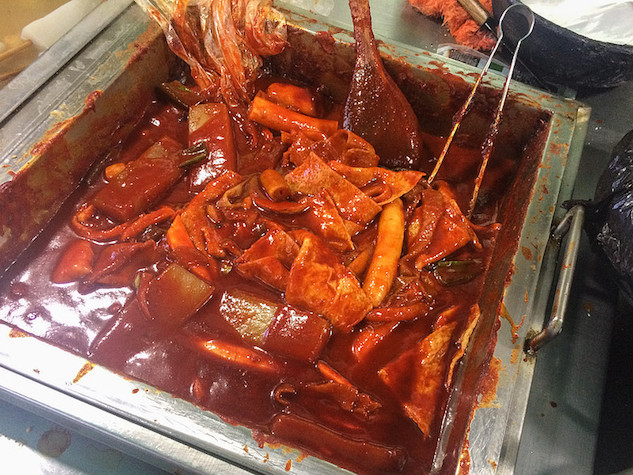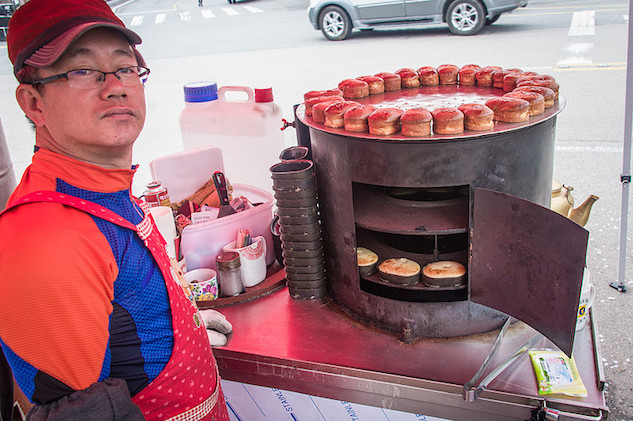6 Traditional Vegetarian Snacks in South Korea
Photos by Coen Wubbels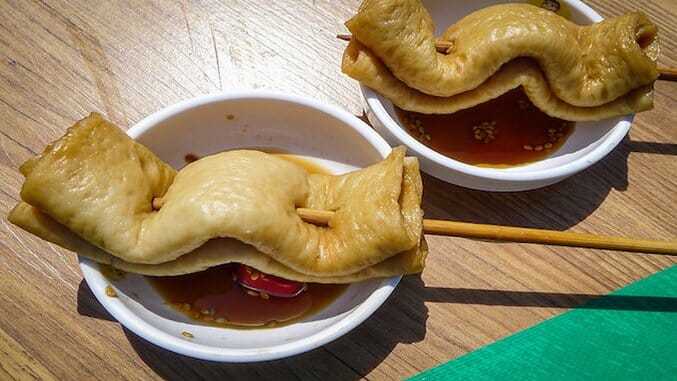
Are you a plant-based eater and about to visit South Korea? Rest assured, you won’t have to depend on eating raw tomatoes and carrots bought at a market. South Korea offers a wide variety of meatless culinary delights to prick your taste buds and fill your stomach. There’s no need to visit exclusive restaurants, either. Check out the food stalls and pushcarts you’ll find in any Korean town. For a few bucks you’ll come across a surprising range of snacks for vegetarians, pescatarians and vegans, varying from sweet to savory, from bland to spicy, or a combination of flavors.
Have a go at fish bread (that doesn’t contain fish) or fish cakes (which are made with fish), munch on roasted chestnuts or, if you’d like to start with something more familiar, try the sweet egg bread. The snacks mentioned below all work for vegetarians and pescatarians who do eat eggs, while vegans may have to check some of the ingredients such as batter.
1. Bungeoppang — Fish Bread (without fish)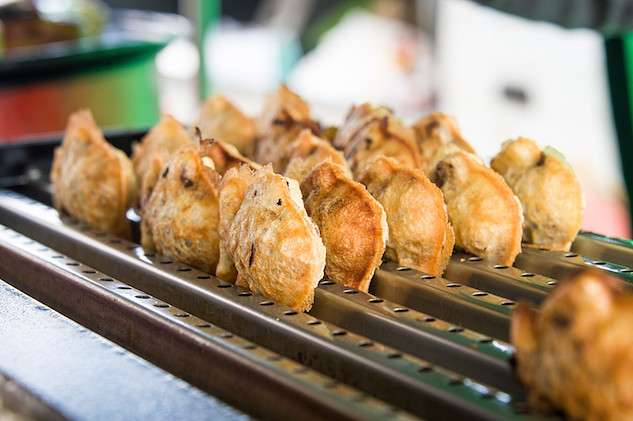
Bungeoppang is one of South Korea’s most popular street snacks and it is the one to look for when you need a bite to warm you up while out and about on a cold day. It’s easy to find: just walk up to a street stall that displays little fish-shaped snacks.
Bungeoppang is a delicious pastry of batter stuffed with sweet red beans cooked in a waffle-type iron with fish-shaped patterns. The combination of the batter and beans gives a crispy outside and a soft, hot inside. The sweet red beans are made of red/adzuki beans with sugar, and possibly salt and vanilla.
While Bungeoppan means ‘fish bread’ it doesn’t contain any fish; the name is simply related to the shape of the snack. Tip: remember that ”ppang” means “bread,” a word you’ll find in the names of other snacks as well, such as gyeranppang (see below) or jjinppang: sweet bread (steamed buns).
Vegans: check if milk and/or eggs were used in the batter.
2. Gyeranppang — Egg Bread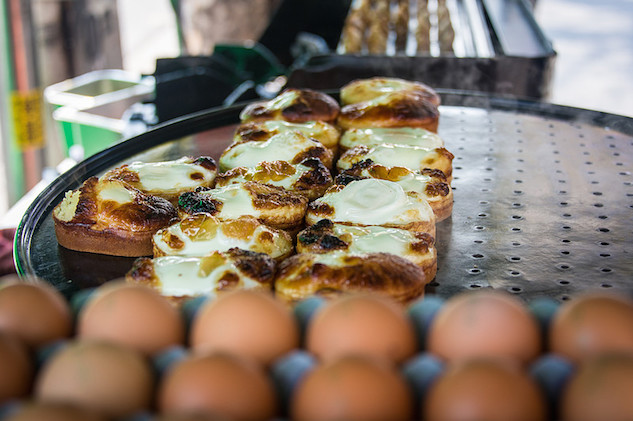
Another ‘ppang’, bread snack, this time with egg (gyeran). Cheap, perfect for breakfast but just as inviting for a quick snack at any time of the day. Gyeranppang offers a combination of sweet and savory that will warm you up during a cold day.
The oblong-shaped snack consists of sweet bread with egg on top or inside. Other toppings may have been added such as parsley or cheese. Ham may be another topping, so check that before buying one.
The fluffy sweet bread is made with flour, eggs, butter, sugar, milk and vanilla essence and baked or steamed in molds with egg either on the inside or on top of the bread.
-

-

-

-

-

-

-

-

-

-

-

-

-

-

-

-

-

-

-

-

-

-

-

-

-

-

-

-

-

-

-

-

-

-

-

-

-

-

-

-

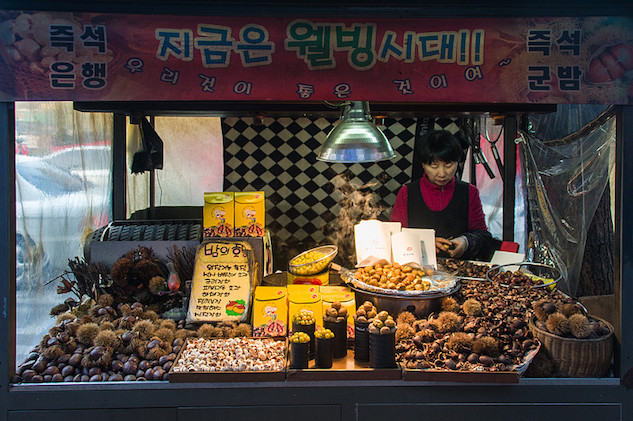 This will work for many types of plant-based eaters: vegetarian, pescatarian, vegan. A typical autumn/winter snack, roasted chestnuts are small and nutritious. Chestnuts grow on deciduous trees belonging to the Castanea Genus that grow in the northern hemisphere.
This will work for many types of plant-based eaters: vegetarian, pescatarian, vegan. A typical autumn/winter snack, roasted chestnuts are small and nutritious. Chestnuts grow on deciduous trees belonging to the Castanea Genus that grow in the northern hemisphere.